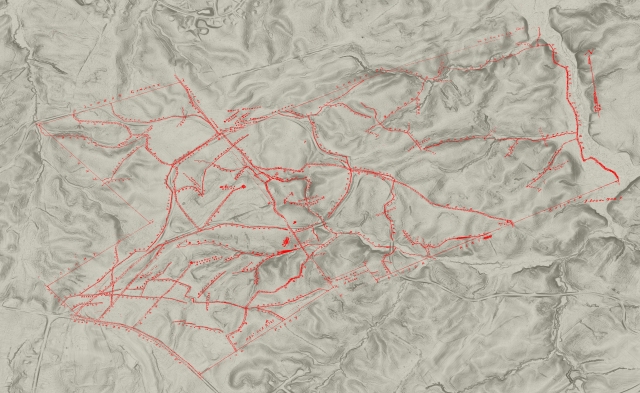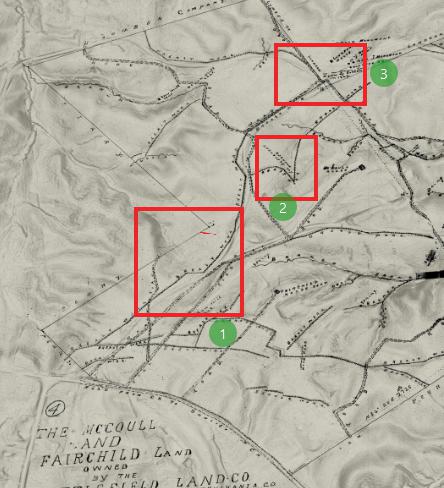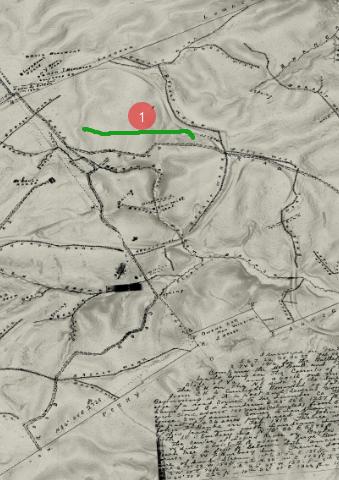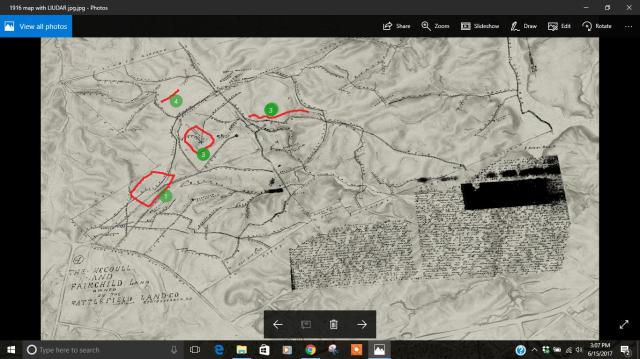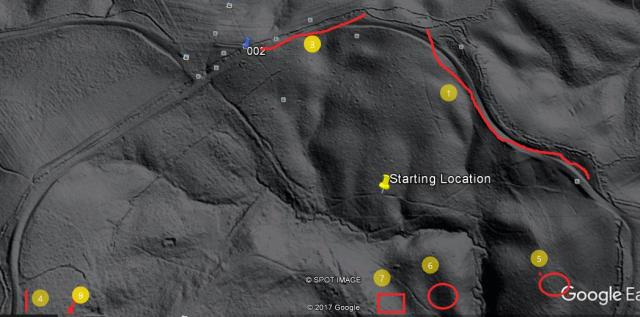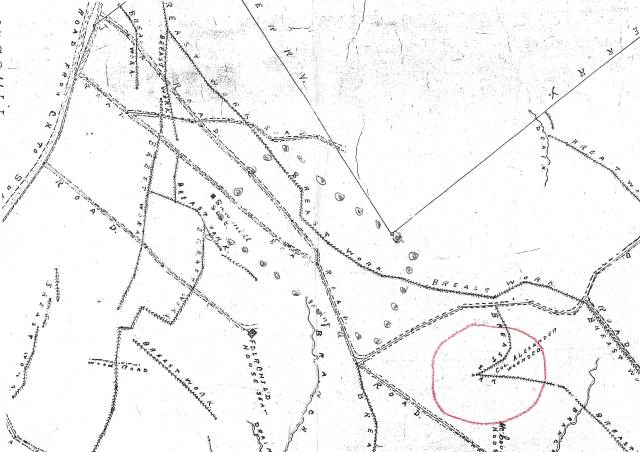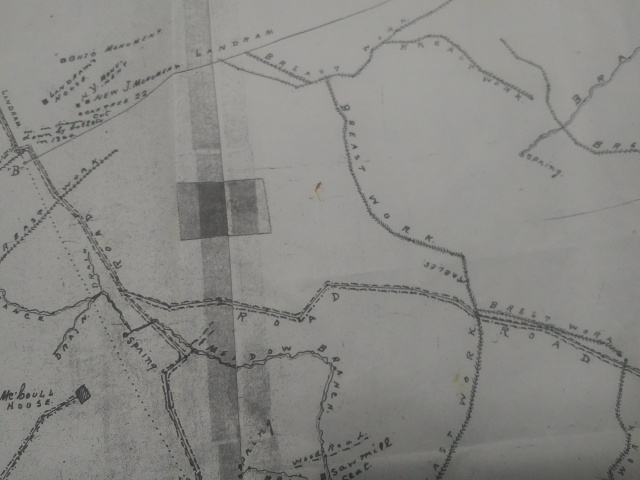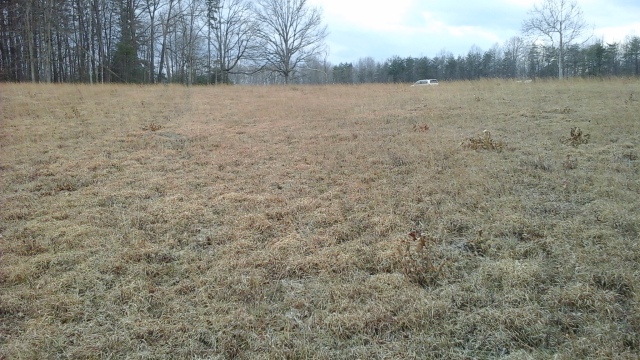I have been working on an article about the events of May 11 and into the wee hours of May 12. Having just finished the first draft and started the editing process I wanted to share some portion of it. Afterwards I will focus on the editing as well as the inclusion of maps, sketches,photos etc.
IF
Prologue
First let me say that what follows is not the story that typically comes to mind when people think of the Battle of Spotsylvania Courthouse. It’s not about the twenty odd hours of hand to hand fighting by men standing in muddy trenches firing under splintered headlogs, or around the end of traverses which ran along a nondescript ridge in the middle of Spotsylvania County one rainy day in May 1864.
Instead it’s the story of the events on the Confederate side during the roughly twenty-four hours before that. Decisions made by men who were veterans at their craft, based on the sketchiest of information on which thousands of lives depended. Action and reaction, the story of the men who attempted to carry out their duty and its result.
The Beginning
Like so often after a battle the morning of May 11th brought rain to the part of Spotsylvania County around its Courthouse village. Rain during this part of year would hardly be a surprise to natives of the area. Native Virginians have long known of what they call “the long spell in May”. This period of sometimes daily rain lasts for approximately ten days near the middle of May, It provides a boost for crops and raises the water table in preparation for the hot dry summer months ahead. This year however was different. For this year it fell, not just on farmers and small shopkeepers but on two great armies. Armies who had come to Spotsylvania County as part of the struggle which would decide the fate of the continent. The weather only added to the misery and difficulties of troops and animals exposed to it. Movement might or might not be affected or prevented. Trenches could become mudholes and parapets become piles of mud. Pulling loads became even more difficult for the animals, who had to endure not only the excruciating drudgery but the treatment of masters who far too many times bordered on cruelty. Temperature differences could cause fog, and that could conceal one’s enemies. The rain as well as fatigue from the exertions limited the days fighting to skirmishing and sharpshooting. The sharpshooters while annoying were generally not dangerous as long as the troops could sit in the trenches. But movement outside of them was at one’s peril. The simple act of going for water could cost a man his life. But none of this could be allowed to stop the armies in the pursuit of their objective. The burden must be borne if ones side was to emerge victorious.
The ease with which the Federals had broken Maj. Gen. Robert Rodes line on the evening of May 10, had come as an unpleasant surprise to Gen. Robert E. Lee. Shortly after the Federals under Col. Emory Upton had been forced to withdraw from the Confederate line that evening Gen. Robert E. Lee had sent a message to the commander responsible for the defenses there. That man Lt. Gen. Richard S. Ewell’s vaunted Second Corps, which still proudly associated itself with the late Stonewall Jackson, held a large salient north of the Brock Road. In his note Lee bluntly ordered Lt. Gen. Ewell to find a way to prevent the Federals from repeating the success. Lee believed that Upton had found it too easy to break over the line around Dole’s salient. (A1) In orders unusually specific for Lee, Ewell was given direction in the most basic matters for a commander, to make sure that junior officers resupplied and reorganized their men to be ready to renew the fight. But he also showed a knowledge of the weaknesses of the defenses of the area in question. As a result, Ewell was instructed to either have a ditch dug outside the works or find a way to enfilade the field with artillery. Either of these two methods, one active the other passive, would contribute to disrupting and slowing an attacking force. (a2) While we cannot today reconstruct the process by which Ewell and his staff chose a plan of action, we can look at what they did or didn’t do. Then by process of elimination perhaps we can see why. Evidently Ewell found the idea of digging a ditch unappealing. There was already a farm road which ran from where the road from the Harrison House crossed Rodes line at Doles Salient towards the Landram House. When the Confederates had formed their defensive line they left the road immediately in front of it. That combined with an abatis should suffice as a passive measure to slow the attackers. The field to the left of the apex of Doles Salient was already covered by artillery fire from two batteries. So how about the other proposal, to enfilade the field? Certainly, there was no need to employ more artillery from the left, or Brock Road side of Doles Salient. To the right of the point where the Harrison House road crossed the works the ground sloped down and away for several hundred yards. This wasn’t suitable for the employment of artillery for several reasons First the slope to the right made the placement of artillery challenging. Guns placed there could fire straight ahead if level pits were prepared to allow accurate aim. But they would be so close to the crest and the way the ground sloped away limited the field of fire. Lee had recognized this and called for the enfilading of the field which obviously meant from the right. At first blush this didn’t appear practical because of the woods and terrain. But a closer examination showed that there was high ground several hundred yards to the north. This part of the line, which was occupied by Walkers Stonewall Brigade was also where there was a slight bend in the line beyond the lane from the McCoul house. From there it would be possible for artillery to place enfilading fire across the field. First however an intervening neck of pine trees which led out from the Confederate lines would have to be cut down. During the night a detail of men from the Stonewall Brigade, armed with axes was sent out to accomplish that task.

